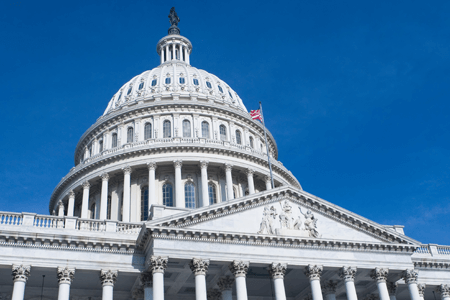ACC Statement on Federal Energy Efficiency Code Updates – American Chemistry Council
ACC Statement on Federal Energy Efficiency Code Updates American Chemistry Council


The American Chemistry Council and Member Companies Welcome Newly Adopted Energy Codes for Federally Supported Homes

WASHINGTON (April 24, 2024) – The American Chemistry Council and its member companies welcome the newly adopted energy codes for federally supported homes. This important update from the U.S. Department of Housing and Urban Development (HUD) and Department of Agriculture (USDA) marks a significant leap forward in energy efficiency for new homes.
Introduction
Across the United States, high utility bills are costing homeowners a significant portion of their monthly incomes. Updating the Minimum Energy Standards for new homes to the 2021 IECC and ASHRAE 90.1-2019 will save families money, make them more comfortable in their homes, and reduce greenhouse gas emissions compared to previous standards. Reduced energy costs that yield monthly savings for owners and occupants help to boost the local economy and lower home operating expenses.
Sustainable Development Goals (SDGs)
This update aligns with several Sustainable Development Goals (SDGs), including:
- SDG 7: Affordable and Clean Energy
- SDG 9: Industry, Innovation, and Infrastructure
- SDG 11: Sustainable Cities and Communities
- SDG 13: Climate Action
This update is a win for the environment and family budgets.
Impact on Energy Efficiency
ACC has consistently encouraged federal agencies to regularly update energy codes. Stronger energy codes will require greater use of high-performance building materials to meet energy efficiency targets. As the American Council for an Energy Efficient Economy (ACEEE) notes: “Houses and multifamily buildings meeting the up-to-date codes generally have more insulation in the walls and roofs, better air sealing and windows, and more energy-efficient heating and cooling systems, including better-sealed ducts.”
Role of Plastic Makers
Plastic makers help create many of the durable, modern materials that enable improved energy efficiency, from high-performance building insulation and sealants that help reduce air leakage, to roof membranes and coatings that protect against moisture and help keep roofs cooler in hot climates.
Call to Action
We encourage the Federal Housing Finance Agency to direct Fannie Mae and Freddie Mac to adopt these codes for more homes.
SDGs, Targets and Indicators
| SDGs | Targets | Indicators |
|---|---|---|
| SDG 7: Affordable and Clean Energy | Target 7.3: Double the global rate of improvement in energy efficiency | Indicator: Adoption of updated energy codes for federally supported homes |
| SDG 11: Sustainable Cities and Communities | Target 11.6: Reduce the environmental impact of cities, including air quality and waste management | Indicators: Reduction in greenhouse gas emissions, reduction in energy costs, boost in local economy |
| SDG 13: Climate Action | Target 13.2: Integrate climate change measures into national policies, strategies, and planning | Indicators: Reduction in greenhouse gas emissions, adoption of updated energy codes for homes |
| SDG 8: Decent Work and Economic Growth | Target 8.10: Strengthen the capacity of domestic financial institutions to encourage and expand access to banking, insurance, and financial services for all | Indicator: Boost in local economy through reduced energy costs |
1. Which SDGs are addressed or connected to the issues highlighted in the article?
The SDGs that are addressed or connected to the issues highlighted in the article are SDG 7: Affordable and Clean Energy, SDG 11: Sustainable Cities and Communities, SDG 13: Climate Action, and SDG 8: Decent Work and Economic Growth.
2. What specific targets under those SDGs can be identified based on the article’s content?
Based on the article’s content, the specific targets that can be identified are:
– Target 7.3: Double the global rate of improvement in energy efficiency
– Target 11.6: Reduce the environmental impact of cities, including air quality and waste management
– Target 13.2: Integrate climate change measures into national policies, strategies, and planning
– Target 8.10: Strengthen the capacity of domestic financial institutions to encourage and expand access to banking, insurance, and financial services for all
3. Are there any indicators mentioned or implied in the article that can be used to measure progress towards the identified targets?
Yes, there are indicators mentioned or implied in the article that can be used to measure progress towards the identified targets. These indicators include:
– Adoption of updated energy codes for federally supported homes (Indicator for Target 7.3)
– Reduction in greenhouse gas emissions, reduction in energy costs, and boost in the local economy (Indicators for Target 11.6)
– Reduction in greenhouse gas emissions and adoption of updated energy codes for homes (Indicators for Target 13.2)
– Boost in the local economy through reduced energy costs (Indicator for Target 8.10)
These indicators reflect the progress made in improving energy efficiency, reducing environmental impact, integrating climate change measures, and strengthening the local economy.
Copyright: Dive into this article, curated with care by SDG Investors Inc. Our advanced AI technology searches through vast amounts of data to spotlight how we are all moving forward with the Sustainable Development Goals. While we own the rights to this content, we invite you to share it to help spread knowledge and spark action on the SDGs.
Fuente: americanchemistry.com

Join us, as fellow seekers of change, on a transformative journey at https://sdgtalks.ai/welcome, where you can become a member and actively contribute to shaping a brighter future.







